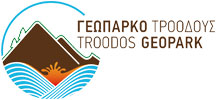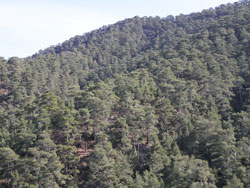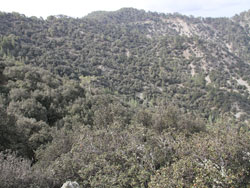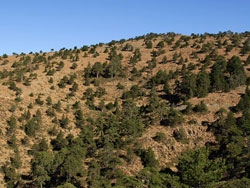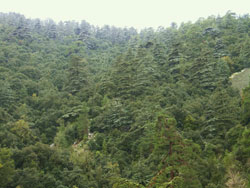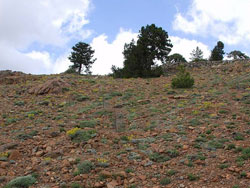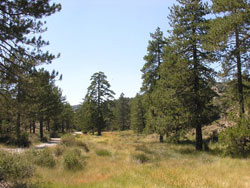|
|
Environment A Wonderland with Troodos at its Heart Dense forests and unexplored vegetation
The major part of the Geopark is covered by forests and dense natural vegetation. It is no accident that the area contains the island’s most noteworthy forests, including the Adelphi and Papoutsa Forests, the Troodos National Forest Park and the largest part of the Paphos Forest. It is state-owned land for the most part but there are significant privately-owned wooded areas which alternate with cultivated farmland and residential areas, thus creating unique sites of exquisite beauty and high ecological value.
Let’s take a closer look at the main types of forest in the area:
(b). Riparian Forests These are natural forests adjacent to rivers and streams, in areas with a slight incline and at altitudes of up to 1,600 metres. Since Troodos includes the largest streams in Cyprus, its riparian forests are the most notable ones, containing species such as the oriental plane tree (Platanus orientalis), the oriental alder (Alnus orientalis), the white willow (Salix alba), the bay laurel (Laurus nobilis), the nerium oleander (Nerium oleander), Tamarisk (Tamarix spp.) and more.
(d). Thickets These are natural plant communities, probably the result of long-term human intervention, and are widely accepted as the plant communities with the highest biodiversity and with typical species such as Cistus spp., Sarcopoterium spinosum, Micromeria spp., etc.
(i) Other habitats and types of vegetation The above-mentioned forests are only the beginning. In the broader region, various other types of vegetation with a rich biodiversity are to be found, including bay laurel (Laurus nobilis) woodlands, Mediterranean dry grasslands with grass, Eastern Mediterranean and annual grasslands, Eastern Mediterranean scree, siliceous rocky slopes with chasmophytic vegetation, cypress woods in the Adelphi Forest and olive and carob groves at lower altitudes.
All these forests and wooded areas, due to their particular importance, receive special treatment and protection with the objective of maintaining their ecological role and the strengthening of the biodiversity that they host. Large parts have been integrated into the Natura 2000 Network while others have been declared National Forest Parks (such as the Troodos National Forest Park) or Nature Reserves, such as Cedar Valley, the Mavri Gremmi and Black Forests at Madari. |
|
